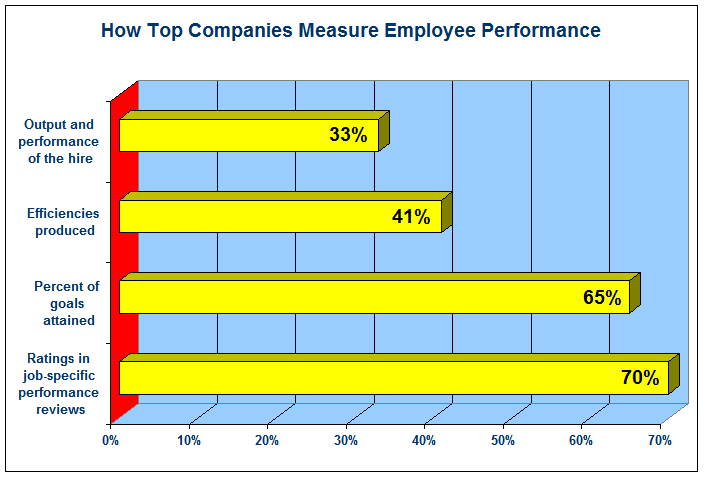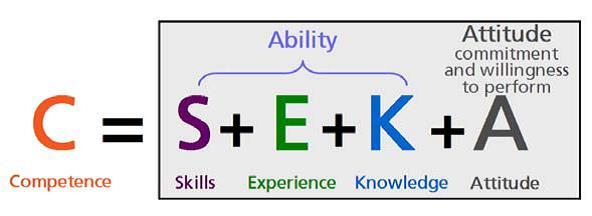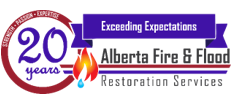Introduction
________________________________________
At Alberta Fire and Flood, education and training for our staff: clients and customers have risen to the top of our list for corporate commitment now and in the future. The applied learning seminars that we have developed are competency-based and focus on the critical tasks associated with the restoration industry. In April, May and June we had over 500 students take our industry based seminars.
Key Measure of Competency Management: Employee Performance
________________________________________
The dominant metric that top performing organizations seek to impact with their competency management strategy is employee performance. When calculating employee performance, most companies tend to focus on rating job-specific performance reviews and percent of goals attained.
Figure 1: How Top Companies Measure Employee Performance

(Survey from: Skills for Business network of 25 Sector Skills Councils)
Learning and Development
________________________________________
As outlined in figure 1, the top performers measure employee performance primarily based on ratings from job-specific performance reviews and percent of goals attained. The top performers also recognize that aligning learning and development with organizational priorities is critical to aiding employees in their overall performance improvement.
Definition: What is a Competency?
________________________________________
The International Board of Standards for Training, Performance and Instruction (ibstpi) defines competencies as:
“A set of related Knowledge, Skills and Attitudes that enable an individual to effectively perform the activities of a given occupation or job function to the standards expected in employment.”
As defined by ibstpi, competency is related to performance on a job and can be measured against commonly accepted standards. The approach combines several points of view concerning competencies including a collection of knowledge, skills, attitudes, a collection of job tasks, and the qualities that identify superior performers that can be measured reliably. The ibstpi competencies are statements of performance, not personality traits or beliefs. Furthermore, there is an implication that competency can be developed through training and instruction. That is not true, as training does not ensure competency.
A simple model of the components of competence could be expressed as shown below.

Relationship between risk assessment, training and competency assessment
________________________________________
The design of competency management systems starts with an analysis of the tasks performed by the worker i.e. asbestos abatement. Although this is a common feature of many training needs analysis methodologies, the approach for competency management differs in that the hazards associated with these activities are then identified and the risks assessed in terms of frequency of occurrence and severity of consequence. This risk assessment process leads to the development of risk-based standards that define what ‘competent performance’ is and how this would be demonstrated in the workplace. Once the competence standards have been developed they become the reference for all organizational activities that require some measurement of human performance.
How are workers assessed?
________________________________________
A qualified assessor will observe a worker and question them about the work they are currently doing. The assessor will test their knowledge and understanding as well as their performance. The assessor will ‘sign-off’ individual competencies within the occupational profile when they have reached the required standard.
The worker will be assessed as being either ‘competent’ or ‘not yet competent’. Workers requiring additional training will be directed to the competency-based on-line training seminars to fill in the missing gap(s) in their profile(s).
A competent worker is a safe worker and a high performing worker.

Leave A Comment
You must be logged in to post a comment.